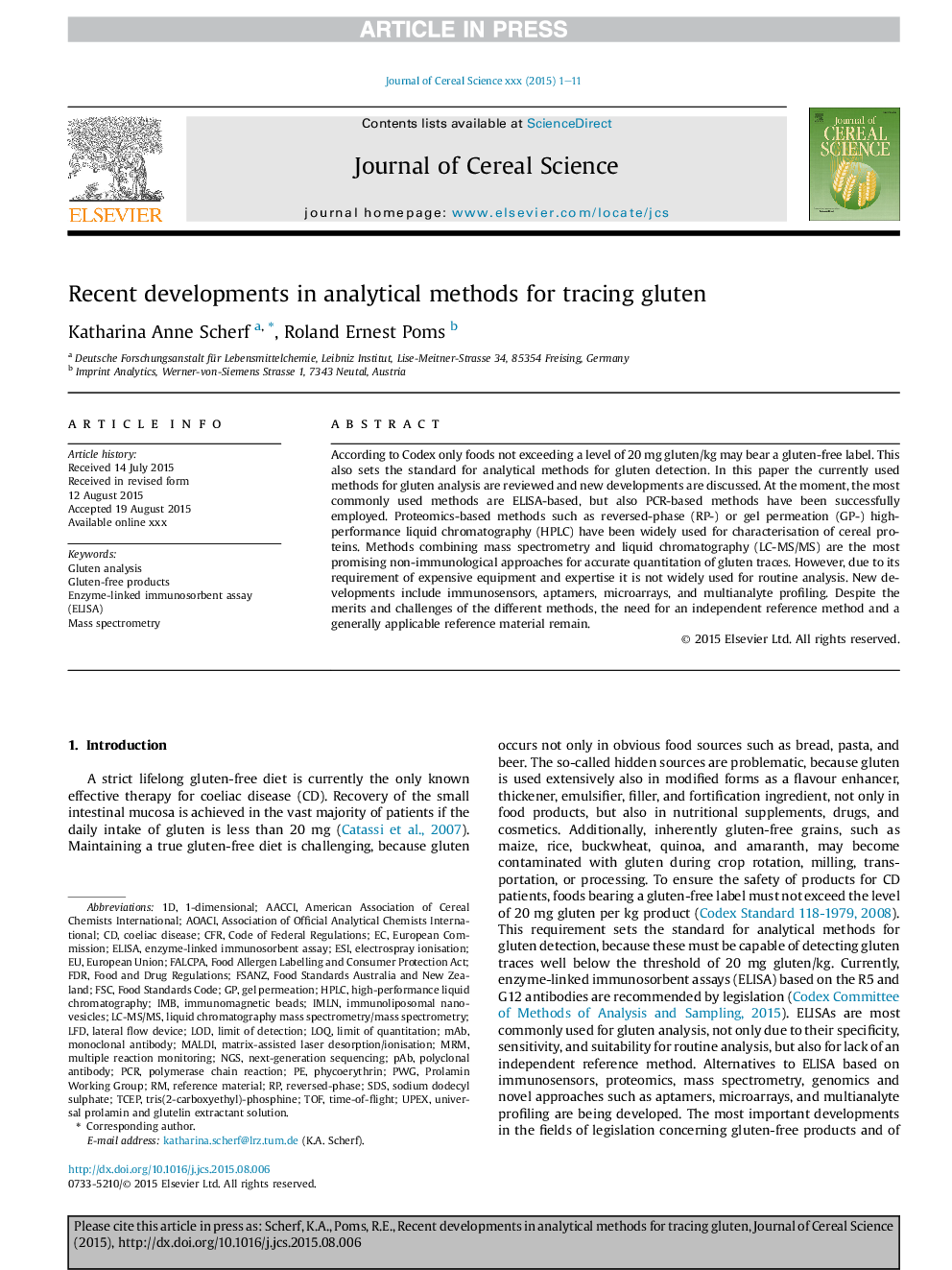| Article ID | Journal | Published Year | Pages | File Type |
|---|---|---|---|---|
| 6377757 | Journal of Cereal Science | 2016 | 11 Pages |
Abstract
According to Codex only foods not exceeding a level of 20Â mg gluten/kg may bear a gluten-free label. This also sets the standard for analytical methods for gluten detection. In this paper the currently used methods for gluten analysis are reviewed and new developments are discussed. At the moment, the most commonly used methods are ELISA-based, but also PCR-based methods have been successfully employed. Proteomics-based methods such as reversed-phase (RP-) or gel permeation (GP-) high-performance liquid chromatography (HPLC) have been widely used for characterisation of cereal proteins. Methods combining mass spectrometry and liquid chromatography (LC-MS/MS) are the most promising non-immunological approaches for accurate quantitation of gluten traces. However, due to its requirement of expensive equipment and expertise it is not widely used for routine analysis. New developments include immunosensors, aptamers, microarrays, and multianalyte profiling. Despite the merits and challenges of the different methods, the need for an independent reference method and a generally applicable reference material remain.
Keywords
MRMTOFFSCAACCiFSANZCFRFDRPABLOQLFDNGSESIFALCPAIMBmAbSDSliquid chromatography mass spectrometry/mass spectrometryPWGtris(2-carboxyethyl)-phosphineLC-MS/MSMonoclonal antibodyPolyclonal antibodyEnzyme-linked immunosorbent assay (ELISA)European UnionCoeliac diseaseELISAEnzyme-linked immunosorbent assayNext-generation sequencingLOD یا Limit of detectionImmunomagnetic beadsLateral flow deviceTime-of-Flight TCEPsodium dodecyl sulphateMass spectrometryReversed-phasephycoerythrinMatrix-assisted laser desorption/ionisationMALDIlimit of detectionlimit of quantitationGluten-free productsReference materialmultiple reaction monitoringGel permeationpolymerase chain reactionPCRCode of Federal RegulationsHPLChigh-performance liquid chromatographyEuropean Commissionelectrospray ionisation1-dimensional
Related Topics
Life Sciences
Agricultural and Biological Sciences
Agronomy and Crop Science
Authors
Katharina Anne Scherf, Roland Ernest Poms,
